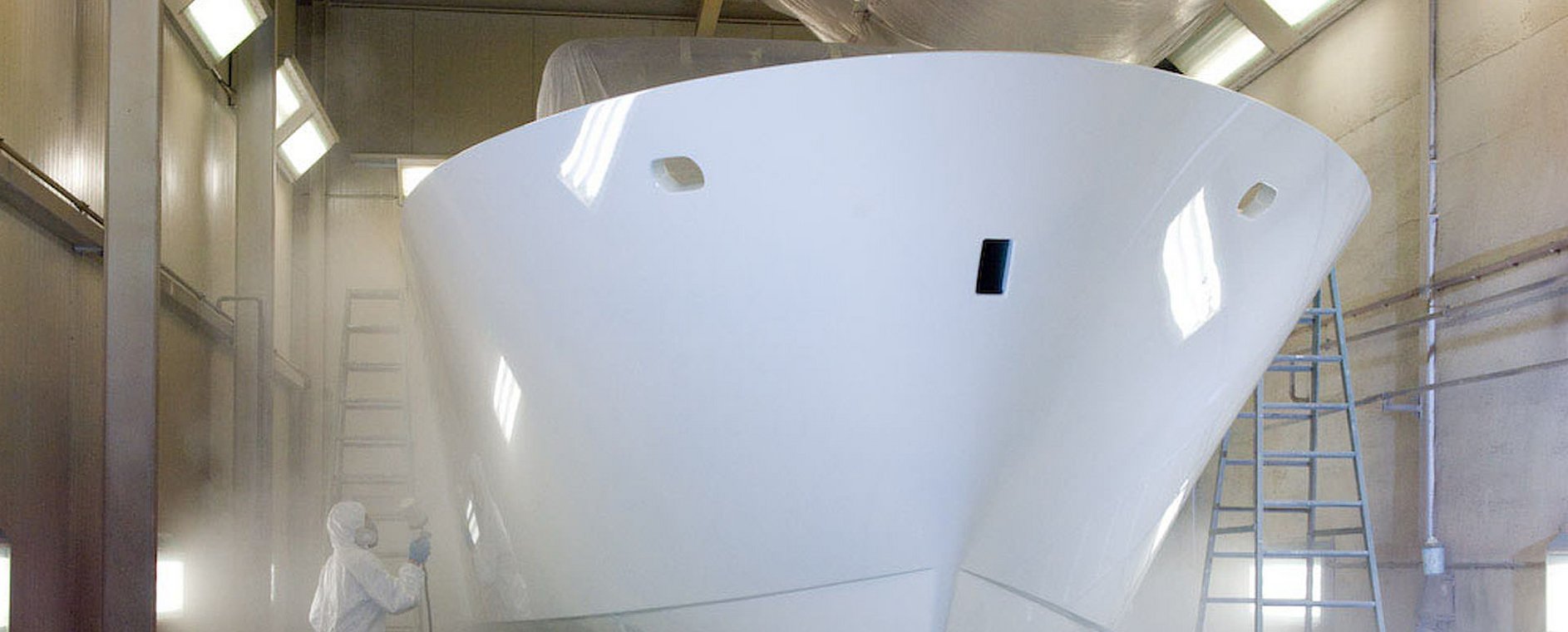Glossary yacht painting
As a water sports enthusiast, boat owner or yacht builder, you naturally know your way around. Nevertheless, there are some technical terms in the specialised field of yacht painting, yacht refit and yacht transport that you would like to look up again. Here you have the opportunity to do so. If you cannot find the term you are looking for, please be patient. Our glossary is still under construction.
Refers to an anti-fouling agent used to prevent the growth and colonisation of fouling organisms on ships, which can increase drag and reduce the service life of a yacht. Antifouling is applied to the underwater hull of boats as a coating or by spraying and releases toxic substances into the water. A distinction is essentially made between hard and soft or self-polishing antifouling. When choosing the right antifouling, in addition to the hull material and old antifouling, the area, boat speed and type of use of the yacht must also be taken into account.
Refers to a hard coating that is applied as a protective layer on glass fibre reinforced plastics (GRP). The gelcoat seals the GRP against moisture and protects against pressure damage.
This is a fibre-plastic composite made of plastic and glass fibres and is the most commonly used boat building material today. Despite its high resistance, GRP also requires regular maintenance. Its processing and repair require experience and technical expertise.
Refers to the reaction of a material with its environment, which causes a measurable change in the material and can impair the function of the component. Corrosion mainly occurs on metals. The best known type is known as rusting, i.e. the oxidisation of metals. Ships are blasted and coated to eliminate or protect against corrosion.
In the natural sciences, osmosis refers to the directed flow of molecules through a semi-permeable membrane. In the case of boats and yachts made of GRP, this refers to a process of delamination caused by moisture between the gelcoat and laminate. There, the water reacts with chemical components, leading to bubbles and cracking. To eliminate osmosis, the gelcoat must be removed, acid seizures exposed, the moisture removed and the hull recoated.
Refers to the surface treatment of a material using sand as an abrasive. It is used to remove rust, paint, dirt, etc. A compressor generates a powerful jet of air that applies the abrasive to the surface to be treated at high pressure, where it develops an abrasive effect. This loosens and removes parts of the surface.

